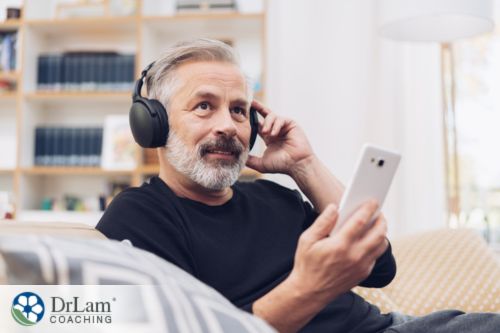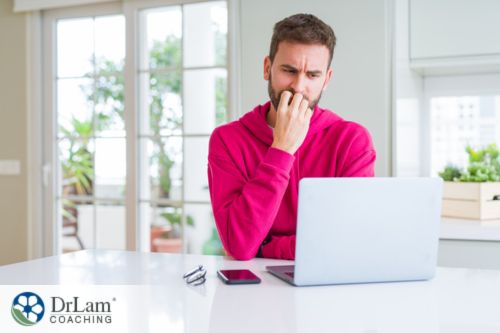 Many of us have habits that we aren't aware of consciously, such as nail biting, skin picking, or even thumb sucking. You may think this is simply a habit with no reason behind it. But it could be a sign that your body is self-soothing. These are often habits we learn as children and carry through into our adult years. This article will explore what self-soothing is and how to adopt habits to self-soothe your body in a healthier way.
Many of us have habits that we aren't aware of consciously, such as nail biting, skin picking, or even thumb sucking. You may think this is simply a habit with no reason behind it. But it could be a sign that your body is self-soothing. These are often habits we learn as children and carry through into our adult years. This article will explore what self-soothing is and how to adopt habits to self-soothe your body in a healthier way.
Self-soothing is a term that describes the body's ability to regulate emotions. In simple terms, it is a practice that can help you feel better emotionally. Self-soothing habits generally appear when you are upset, anxious, or frustrated. They may happen consciously or subconsciously.
There are many different types of practices that your body may adopt to self-soothe. And these may be healthy or unhealthy. Some examples of self-soothing practices include:
These practices may have arisen to help you cope with stress or a traumatic event. But while they may provide some relief from these emotions, some of these practices can also be dangerous to your health as well as embarrassing.
Luckily there is a range of healthier self-soothing techniques that you can adopt to assist in regulating your emotions.
Purposeful breathing can be a powerful self-soothing technique. When you are stressed or anxious, your breathing patterns can subconsciously change from breathing deeply to shallow, fast breathing. Or you may hold your breath. This can then exacerbate any feelings of anxiety or stress.
Studies suggest that breathing deeply can help to reduce your heart rate and blood pressure, reduce any muscle tension, and help to clear your mind. Breathing also helps to bring you out of your head and into your body, and doing this can help further reduce stress and anxiety.
Certain breathing exercises can also help to trigger the release of feel-good hormones such as dopamine, helping to improve mood and reduce worry. These breathing exercises include single-nostril breathing and box breathing.
When you are anxious or stressed, there may be a lot of emotions or thoughts racing through your mind. Journalling can help you put those feelings and thoughts onto paper. Doing so frees up space in your mind and can help your conscious and subconscious mind process the emotions or events of the day. If you practice journalling frequently, it may also help to identify any triggers or subconscious beliefs that may be inhibiting you.
Tuning into your radio or your music channels is a simple yet effective way of self-soothing. Music can uplift you out of a dark mood as well as calm you down when you are stressed or angry. Research has found that listening to music every day for 60 days assisted students with anxiety.
 With music, it's all about the frequency of the beat. Music that has 60 beats per minute can cause the brain to synchronize with the beat of the music. This induces alpha brainwaves which are associated with relaxation. Listening to music can also help induce sleep by switching on delta brainwaves, the brainwaves associated with sleep.
With music, it's all about the frequency of the beat. Music that has 60 beats per minute can cause the brain to synchronize with the beat of the music. This induces alpha brainwaves which are associated with relaxation. Listening to music can also help induce sleep by switching on delta brainwaves, the brainwaves associated with sleep.
If you would like to use music as a self-soothing technique, it may be helpful to create a playlist full of calming, relaxing music that you can use when you are feeling stressed or anxious. You can also choose a time of day such as morning or night for a specific amount of time that is devoted to listening to this playlist.
When you are feeling anxious or stressed, it is very easy to live in your head rather than your body. This is where grounding can help. Grounding is the practice of connecting to your physical body, helping you to be in your body rather than your head.
Some practices for grounding include:
Physical contact is not just a sign of affection but also has some important effects on your body. When you hug someone or yourself, it reduces the stress hormone cortisol and increases the release of oxytocin as well as serotonin, a natural anti-depressant.
If you don't have anyone to hug, you can either place your hand over your heart or wrap your arms around yourself and give yourself a hug. If you decide to give this technique a go, try to make sure that the hug lasts for at least 20 seconds. Studies have found that a hug lasting 20 seconds will help to ensure that oxytocin is released.
Exercising is a great way to naturally increase your feel-good hormones as well as get the energy flowing in your body. Exercise does not just mean running or going to the gym. It also includes walking and mindful-based movement practices such as yoga and Tai-chi. If you are currently recovering from trauma, trauma-informed yoga may be a good place to start.
Not only will exercises such as yoga or Tai-chi help to ground you and bring you into your body, but they can also establish a feeling of safety within your body.
Talking to yourself either mentally or verbally can be an effective self-soothing technique. During times of stress and anxiety, it can be easy to surround yourself with a cloud of negative self-talk about yourself. Positive self-talk helps to prevent this and can help you to self-soothe. When using positive self-talk, it's important to talk in a calm, grounded voice, a bit like how a caregiver would talk to a child. Positive self-talk can include acknowledging your current feelings and focusing on positive aspects of how you are doing.
Mirror talk is another way of using positive self-talk but in the mirror where you are looking into your own eyes. This can help to self-soothe as well as rewire subconscious beliefs. The theory of why this works is when you first heard an insult or hurtful thing about yourself, you were most probably told by the person looking at you directly. By talking positively to yourself looking in the mirror, it can help to rewire your body's memory of these hurtful words as well as change any negative subconscious belief you may have about yourself.
 Stress is a common occurrence, and in short-term cases, your body can handle stress. Your adrenal glands and NeuroEndoMetabolic (NEM) Stress Response System, help to support your body in times of stress. However, in long-term stress, your adrenal glands can become depleted and this can result in an imbalance within your NEM system. This results in Adrenal Fatigue Syndrome (AFS).
Stress is a common occurrence, and in short-term cases, your body can handle stress. Your adrenal glands and NeuroEndoMetabolic (NEM) Stress Response System, help to support your body in times of stress. However, in long-term stress, your adrenal glands can become depleted and this can result in an imbalance within your NEM system. This results in Adrenal Fatigue Syndrome (AFS).
Your NEM system consists of six different circuits of related organ systems; one of these circuits is the neuroaffect circuit. This circuit consists of the brain, autonomic nervous system, and gut microbiome. When there are imbalances within this circuit it can cause symptoms of depression, anxiety, stress intolerance, and difficulty falling and remaining asleep.
One way to help relieve these symptoms is to use self-soothing techniques. However, it is also important to reduce the cause of stressors as well as to support your body with other healthy diet and lifestyle techniques to manage this condition.
Still, it is important to use caution with any new practice when you are healing from AFS. In AFS, your body can become incredibly sensitive to any new practices, external factors, or any stress on the body, even if it is slight. This can result in your body reacting to it and setting you back in your healing journey. Some self-soothing strategies such as exercise may have to be approved by your healthcare provider first as exercise can act as a stressor on the body.
Whilst strenuous exercises such as weight lifting or running may not be encouraged at first, other exercises such as restorative yoga may be recommended to help regulate your nervous system as well as help to self-soothe yourself.
Self-soothing techniques may take the form of an annoying habit that you have adopted. However, intentional self-soothing can be a great way to provide some comfort to yourself and help you to regulate your emotions. Adopting regular and healthier self-soothing techniques may help to prevent habits such as nail biting and skin picking. Some examples of these techniques include:
If you feel that you are currently on an emotional rollercoaster of stress and anxiety and are struggling to understand why or need relief, you can call our team at +1 (626) 571-1234 for a free initial consultation, or click here.
Replacing any unhealthy self-soothing techniques can take time. A good place to start is by choosing one or a combination of healthy self-soothing techniques and consciously practicing them daily. By doing this, your body may start turning to these techniques to self-soothe.
